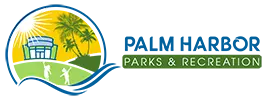Community Facts & Figures
People began occupying the area now known as Palm Harbor as early as 1860. Between 1864 and 1925 Palm Harbor went through three names and was a pioneer town, a farming center, a developer’s dream, a resort town and a college town.Even before the Civil War, pioneers began to trek southward to Florida, including the Palm Harbor area. The year-round warm weather made the area conducive to farming, citrus groves, and fishing. Warm mineral springs gave birth to spas and health resorts.
Some citrus groves are still in existence, and fishing & farming still provide a livelihood to some area residents. For a day of relaxation, visit one of our resorts, parks, or nearby beaches. For a step back in time, stroll down Florida Avenue in historic downtown Palm Harbor where many of the early buildings remain, open and welcoming just as they were in the beginning. Business services, beauty and barber facilities, dining, shopping and the Greater Palm Harbor Area Chamber of Commerce are located in the downtown area. Make a special visit to the North Pinellas Historical Museum at Belcher & Curlew Roads for a look back in history!
In 1985, the residents of Palm Harbor voted to tax themselves and create the Palm Harbor Community Services Agency (PHCSA), an entity that now provides parks, recreation and library services to the community’s 60,000+ residents. PHCSA, as it’s more commonly known, oversees the operations of Palm Harbor Parks & Recreation, the Palm Harbor Library, East Lake Community Library and the East Lake Recreation Services District.
Palm Harbor Facts & Figures
Country
United States
State
Florida
County
Pinellas
Area
Country
United States
Total
26.6 sq. miles
Land
17.4 sq. miles
Water
9.2 Sq. miles
Elevation
49 ft.
Population, Census, April 1, 2020
Total
61,366
Density
2,200 sq. miles
Time Zone
Eastern (EST) (UTC-5)
Summer (DST)
EDT (UTC-4)
Zip Codes
34682, 34683, 34684, 34685
Area Codes
727
